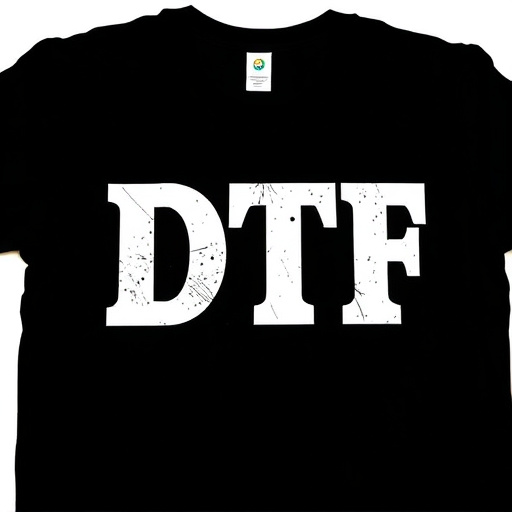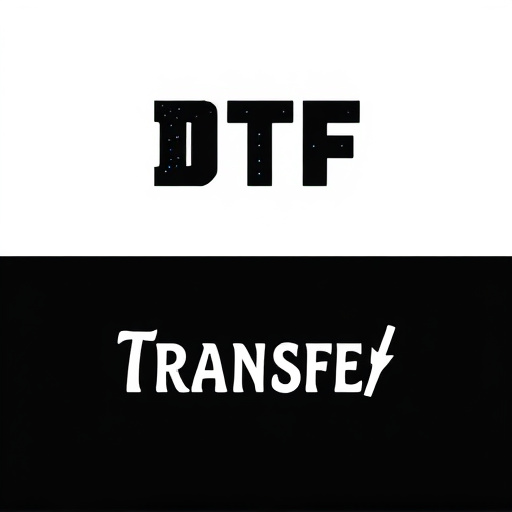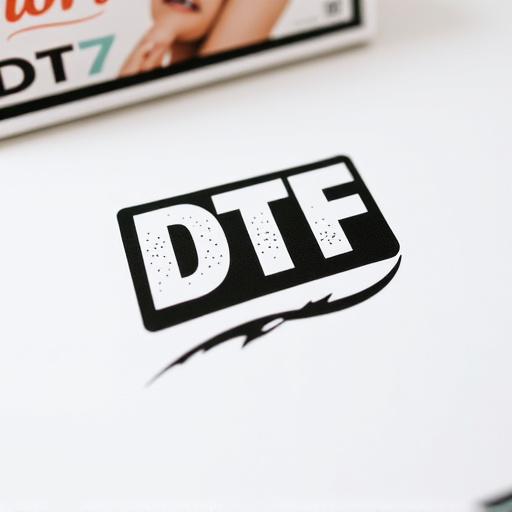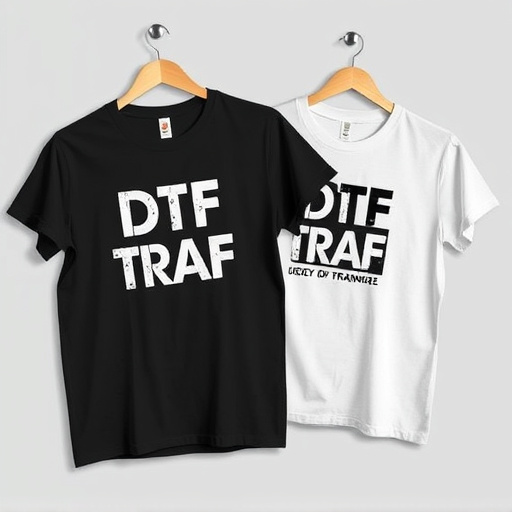Direct-to-film (DTF) transfer technology revolutionizes printing with unparalleled precision, handling complex designs and vibrant colors. This game-changer eliminates intermediate steps, offers customizability, and ensures long-lasting durability for indoor/outdoor use. Advanced DTF printing processes, automation, and sustainability efforts drive its growth across industries from signage to artistic installations. High-quality inks, sophisticated machinery, and protective coatings ensure DTF prints meet industry standards while catering to evolving consumer demands.
“Discover the cutting-edge world of Direct-to-Film (DTF) Transfer production, a game-changing technology revolutionizing printing. This article explores the top businesses leading the charge in DTF transfer innovation, offering unparalleled quality and versatility. From understanding the fundamentals of DTF technology to delving into its numerous advantages, we unravel the secrets behind this DTF Printing method’s success. Get ready to explore real-world DTF prints applications and gain insights into the future trends shaping this dynamic industry.”
- Understanding Direct-to-Film Transfer (DTF) Technology
- Top Businesses Innovating in DTF Transfer Production
- The Benefits of Choosing DTF for Printing
- Case Studies: Successful DTF Prints in Action
- Navigating the Quality and Durability of DTF Transfers
- Future Trends in DTF Transfer Industry
Understanding Direct-to-Film Transfer (DTF) Technology

Direct-to-Film (DTF) transfer technology has revolutionized the way businesses approach film printing and reproduction. This cutting-edge process allows for the direct application of images onto various materials, such as plastic or metal, eliminating the need for intermediate steps like etching or plate-making. DTF Transfer offers unparalleled precision and detail, ensuring that every aspect of the original image is accurately replicated. With its ability to handle complex designs and vibrant colors, it’s become a game-changer in industries ranging from signage to automotive, where high-quality, durable prints are required.
DTF Printing involves a sophisticated process where images are first transferred onto a film or mask, which is then precisely aligned and exposed to light through the target material. This technique ensures not only exceptional image clarity but also long-lasting durability. DTF Prints are known for their resistance to fading, making them suitable for both indoor and outdoor applications. Moreover, the technology’s versatility allows for custom sizes and shapes, catering to a wide array of business needs.
Top Businesses Innovating in DTF Transfer Production

In the realm of direct-to-film (DTF) transfer production, several businesses are pushing boundaries and setting new standards. These top players in the industry are revolutionizing DTF technology with innovative approaches, ensuring superior print quality and efficiency. One notable trend is the integration of advanced printing techniques, such as DTF Printing, which allows for intricate and detailed designs on a variety of surfaces. This precision enables businesses to create stunning visuals, from vibrant posters to eye-catching product packaging.
Furthermore, these leading companies are focusing on streamlining production processes. They have developed sophisticated systems that automate various stages, reducing turnaround times and increasing output capacity without compromising quality. With an emphasis on sustainability, some businesses are also exploring eco-friendly DTF transfer materials, contributing to a greener production landscape. These innovations in DTF Transfer production not only cater to the current market demands but also shape the future of this dynamic industry.
The Benefits of Choosing DTF for Printing
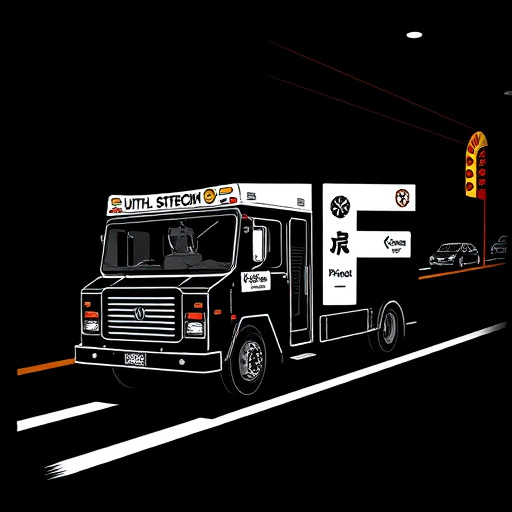
Direct-to-film (DTF) transfer production offers a range of benefits that set it apart from traditional printing methods. One of the key advantages is the exceptional quality of DTF prints. This technology allows for intricate details and vibrant colours to be seamlessly transferred directly onto various materials, ensuring a visually stunning end product. Whether it’s fabric, paper, or even metal, DTF enables businesses to achieve high-resolution, long-lasting prints that are perfect for marketing materials, textiles, and more.
Additionally, DTF production streamlines the printing process. By eliminating the need for separate plates or screens, it significantly reduces setup time and costs. This efficiency makes DTF an attractive choice for small and medium-sized businesses looking to quickly bring their creative ideas to life. Moreover, DTF’s versatility allows for on-demand printing, enabling companies to adapt to changing market demands without incurring excess inventory costs.
Case Studies: Successful DTF Prints in Action

Direct-to-film (DTF) transfer production has seen remarkable success in various industries, showcasing its versatility and high-quality outcomes. Case studies of DTF prints reveal a wide range of applications, from vibrant signage and promotional materials to intricate artistic installations. Businesses specializing in DTF transfer have successfully printed on diverse substrates, including metal, wood, glass, and even fabric, demonstrating the technology’s adaptability.
These case studies highlight the exceptional detail and color accuracy achieved through DTF printing. For instance, a leading apparel brand utilized DTF for custom fabric prints, resulting in vibrant, long-lasting designs that enhanced their product line. Similarly, an architectural firm employed DTF to create intricate murals on glass panels, transforming ordinary spaces into stunning visual experiences. These real-world applications underscore the potential of DTF transfer as a powerful tool for enhancing branding, artistic expression, and visual communication across various sectors.
Navigating the Quality and Durability of DTF Transfers
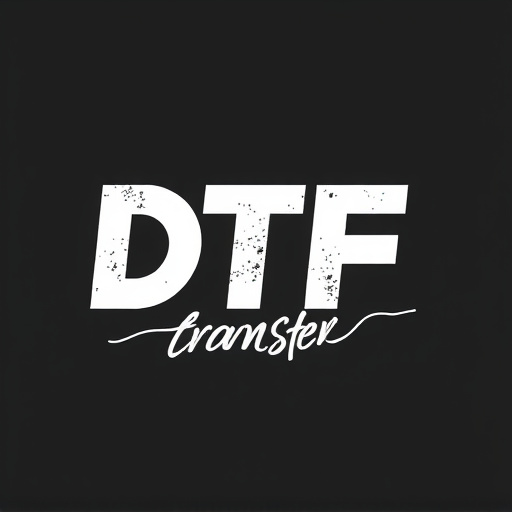
Navigating the quality and durability of DTF transfers is paramount for businesses specializing in direct-to-film (DTF) production. The process involves intricate printing techniques that demand precision to ensure each DTF print mirrors the original artwork’s vibrancy and detail. High-quality DTF inks and advanced printing machinery play a pivotal role in achieving exceptional results, preserving colors and ensuring longevity against fading or damage.
Durability is another critical aspect. Businesses must select robust film materials capable of withstanding environmental factors like light exposure and handling. Proper lamination and protective coatings further extend the lifespan of DTF prints, making them suitable for both indoor and outdoor applications. Regular quality control measures during production guarantee consistency and enable businesses to meet stringent industry standards, ensuring satisfied customers and a competitive edge in the market.
Future Trends in DTF Transfer Industry

The direct-to-film (DTF) transfer production industry is constantly evolving, driven by advancements in technology and changing consumer demands. One of the most promising future trends is the integration of 3D printing technology into DTF processes. This innovation promises to enhance the quality and speed of print jobs, opening up new possibilities for intricate and personalized designs in various sectors like fashion, jewelry, and prototyping. As 3D printing becomes more accessible and affordable, we can expect a surge in custom DTF prints, allowing businesses to offer unique, on-demand products that cater to individual consumer preferences.
Another significant trend is the shift towards sustainable practices within the DTF industry. With growing environmental consciousness, manufacturers are exploring eco-friendly materials and production methods for DTF transfers. Biodegradable films and inks, as well as water-based printing processes, are gaining traction as businesses strive to minimize their ecological footprint without compromising on quality or performance. This shift not only aligns with broader sustainability goals but also caters to the increasing demand from consumers who prioritize environmentally responsible products.





